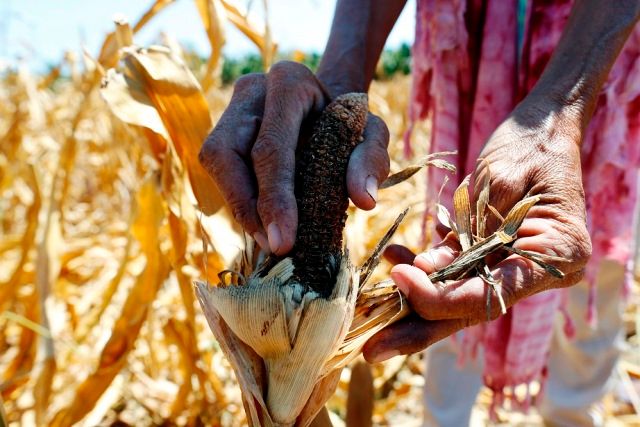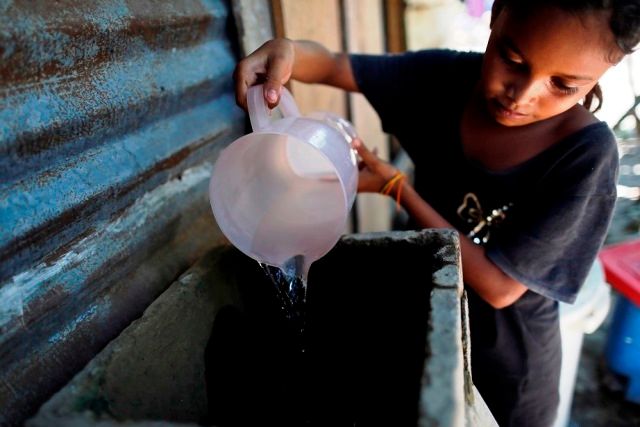Children are the most vulnerable when there are calamities, drought or any type of disasters. Of course, parents would do anything to save their kids even if it means the worst could happen to the parents while in the process.
In Mindanao especially in Maguindanao, severe drought affects children’s health and well-being, limiting their access to clean water and nutritious food. Farming is one of the main sources of income there, producing mainly maize. Instead of lush green cornfields, people now see only dry farmlands. Since many families earn their living through farming, low harvest resulting from damaged crops also affect their ability to feed and provide for their children. Pregnant and lactating mothers unable to afford nutritious food also put their babies in peril, resulting in low birth weight or insufficient breast milk supply.

A farmer shows the damage to the harvest caused by drought. Because of low harvest, families have had to look for other sources of income to provide for their families. ©UNICEF Philippines/2016/Maitem
“In the Philippines, at least 42 per cent of the country was affected by drought and dry spells, mostly in Mindanao where a high percentage of children are already stunted. UNICEF is concerned about worsening nutrition, increasing diarrhea and lack of water supply. We must come together to help children by responding with immediate life-saving needs as well as increasing their resilience,” UNICEF Philippines Emergency Specialist Verity Rushton says.
Water and food as basic rights
Access to water and proper nutrition are basic human rights, yet children like Rehana and Mardiya have had to work hard to get clean water and nutritious food to eat. After fetching water from the well, they have to filter and boil the water to ensure it is safe to drink. At times when the water becomes yellowish, the family pays P50 pesos daily for drinking water, putting further strain on the family’s financial resources.

Rehana Sandigan, 10, fetches water from a well in Mamasapano town in Maguindanao, where El Nino has caused drought. ©UNICEF Philippines/2016/Maitem
Rehana’s mother Norma shares that it has been difficult to make ends meet since El Niño started. Because of the drought, the harvest has been poor. Families have resorted to eating rice, boiled banana, cassava and maize to stave off hunger.
“Before, I could harvest as much as 25 sacks of corn. I got more than P10, 000 per harvest season every three months. Now with the drought our income declined to P3, 000 per harvest,” Norma said.
With the drought projected to last until June 2016, the Sandigan family, like many others will have to find other means to support their children.
Responding to nutrition and water needs
UNICEF’s Mindanao Field Office has been working with partners on the ground to ensure support for children and families suffering from El Niño.
In Maguindanao, UNICEF works with government partners such as the Department of Health for micronutrient supplementation for pregnant and lactating women and provision of micronutrient powder for children 6-23 months. For water, sanitation and hygiene, UNICEF works with NGO partners such as Action Against Hunger International to work with local leaders on coping strategies and influencing health habits.

A teenager fetches water in a dried river in the drought-affected village of Kuya, South Upi, Maguindanao. ©UNICEF Philippines/2016/Maitem
